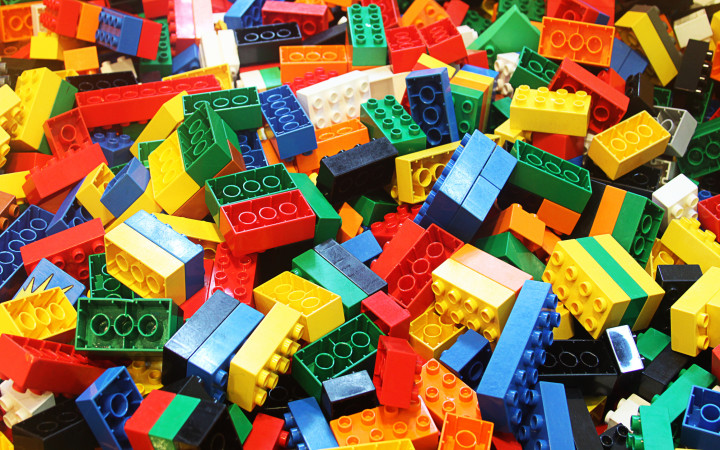Today’s Wonder of the Day was inspired by Jonah. Jonah Wonders, “How are Legos made?” Thanks for WONDERing with us, Jonah!
Do you have any favorite toys? Maybe you love playing with a slinky or playdough. Many kids can’t get enough of their dolls and action figures. Or perhaps your favorite is those colorful little blocks we all know as LEGO® blocks. Let’s learn a little more about the history of these fun toys.
LEGO® blocks are just part of the overall line of construction toys made by the Lego Group, a company from Denmark. You’re probably familiar with the colorful interlocking plastic blocks. But there are many other LEGO® options! They include gears, figurines, wheels, and various other parts. These allow kids to make all sorts of buildings, machines, vehicles, and even robots.
What makes LEGO® toys so great? They can be taken apart and reused over and over again to make new creations. Kids can’t get enough of them! The brand has grown from just toys to include movies, games, competitions, and even LEGO®-themed amusement parks!
The Lego Group got its start in the carpentry workshop of Ole Kirk Christiansen. He started making wooden toys in 1932. He began calling his company “Lego” in 1934. The name comes from the Danish phrase leg godt, which means “play well.”
The Lego Group began making its famous plastic interlocking blocks in 1949. At first, they didn’t sell well. Customers still preferred wooden toys. Over time, though, they became very popular. The company made them part of an overall system of objects that kids could use to build an unlimited number of things.
The LEGO® block design still in use today was patented on January 28, 1958. Blocks from that year can still be used with blocks made today. The Lego Group takes great pride in making pieces that fit firmly together but are easily taken apart.
Since 1963, LEGO® blocks have been made from a special plastic called acrylonitrile butadiene styrene or ABS. Over the decades, the Lego Group has made over 400 billion LEGO® blocks. That’s enough for every person in the world to have over 60 of them!
Today, the Lego Group also makes LEGO® robotic sets. These help young students learn how to build and program robots in competitions. A couple of examples are the Junior FIRST LEGO® League and the FIRST LEGO® League.
Some children may also be familiar with the LEGO® video game series. Some of these popular video games include “Lego Star Wars,” “Lego Indiana Jones,” “Lego Batman” and “Lego Rock Band.” Today, these toys can be found in all parts of popular culture—even film! The 2014 Lego Movie was a big hit at the box office.
The popularity of LEGO® blocks has certainly grown over the years. They are even used in schools as educational toys. In 1998, LEGO® blocks were inducted into the National Toy Hall of Fame.
Have you ever played with LEGO® blocks? Do you have another favorite? Toys are a great way to play and use your imagination. Grab your favorite toy and have fun with a few friends today!
Standards: CCRA.L.3, CCRA.L.6, CCRA.R.1, CCRA.R.2, CCRA.R.4, CCRA.R.10, CCRA.SL.1, CCRA.SL.2, CCRA.W.2, CCRA.L.1, CCRA.L.2




